Park Güell
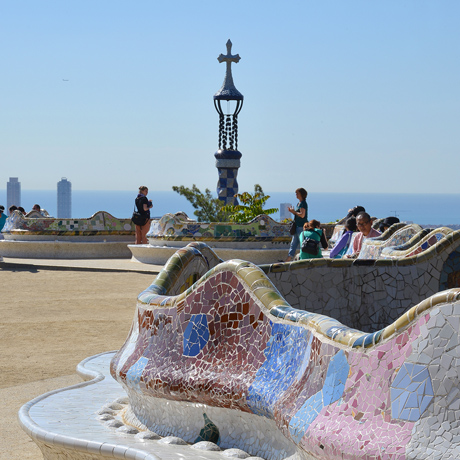
Built in 1900, Park Güell was a dream shared by the entrepreneur Eusebi Güell and Antoni Gaudí. The original intention was to build a residential neighbourhood in Barcelona based on the British garden city model, which was precisely why the industrialist named it Park Güell, with “park” in English.
Eusebi Güell had purchased a large property from the Marquis Mariano with a manor house on it in the area popularly known as Bald Mountain. The project envisaged the sale of sixty plots to families of the Barcelona bourgeoisie, and even though the original plan never became a reality, Gaudí left an authentic wonder here to posterity.
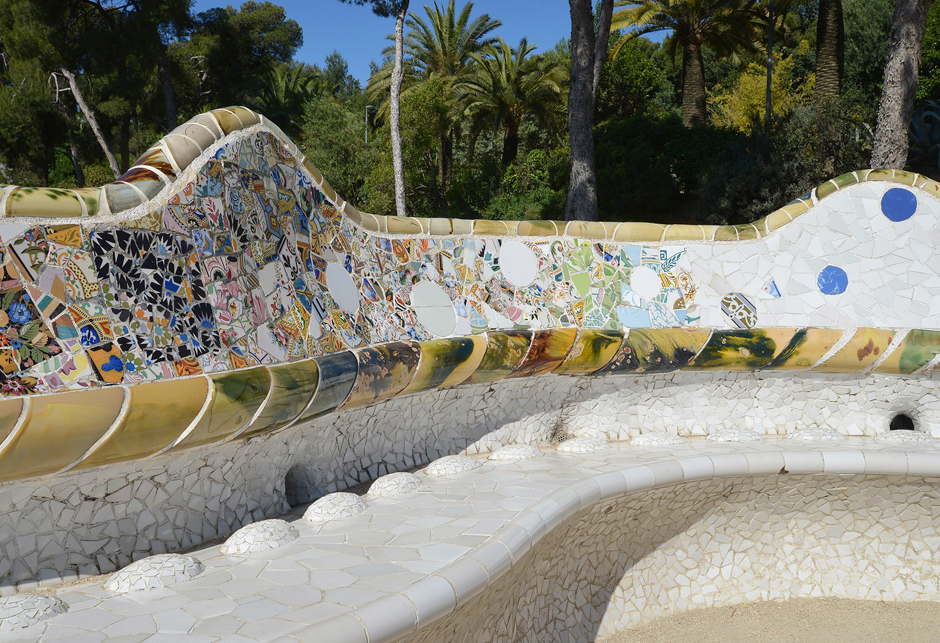
A BIG CHALLENGE AND AN OBSTACLE COURSE
Gaudí accepted Güell’s difficult and interesting commission and proposed a residential development for 60 houses. One by one, he studied the best position for each dwelling on its respective plot: it was important that the houses should not block each other’s views while assuring an acceptable degree of privacy at the same time.
The truth is, however, that the project got off to a bad start. In addition to the restrictions imposed by Gaudí, the fact is that the site was in a rather desolate place far away from the city centre in those days, and it was moreover poorly linked, which is something that the potential customers did not like since they considered the journey to town to be a perilous adventure.
In consideration of this, Güell financed the construction nearby of a garrison for the Civil Guard. Commissioned to the architect Juli Batllevell and designed by Francesc Berenguer i Mestres – Gaudí’s main assistant –, the structure was to stand right next to the Convent of Saint Joseph of the Mountain, a highly frequented place. Even so, and despite all the money that Güell was investing in them, the plots did not sell.
In 1905, Batllevell built the first house of the residential development for the lawyer Martí Trias. Subsequently, Berenguer was commissioned to build another house, based on drawings signed by Gaudí, to serve as a model home, helping to attract buyers and to step up sales in this way. This was, however, the second and last family house in the development, built by the contractor José Pardo Casanovas, and it was Gaudí himself who bought the house in 1906 so that he could live there with his father, his niece and a housemaid.
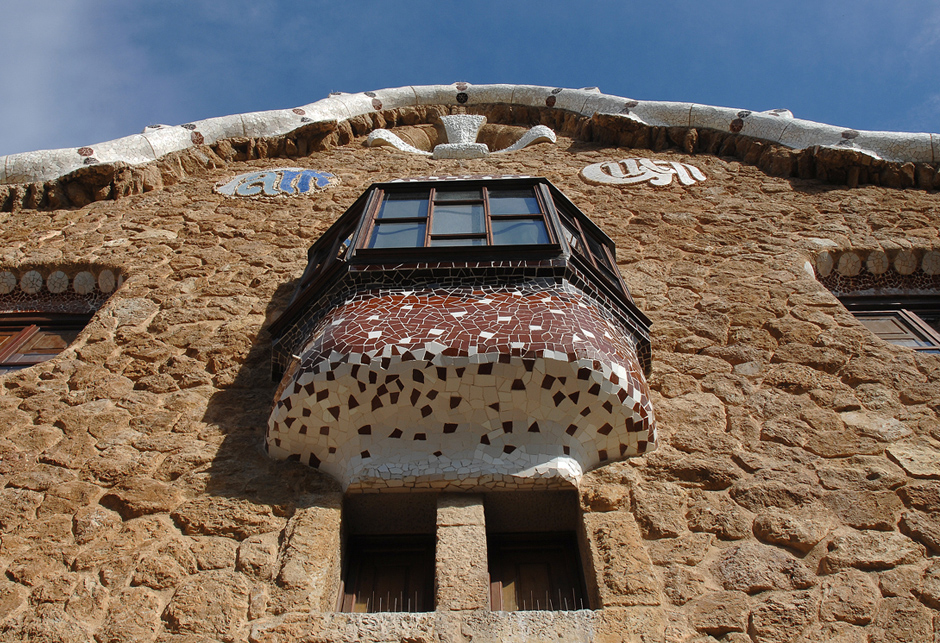
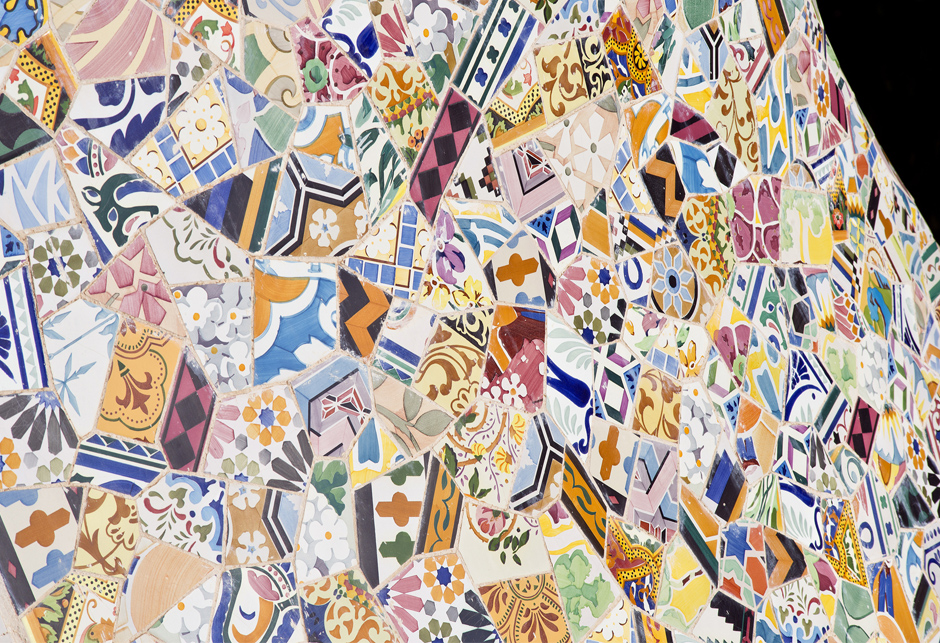
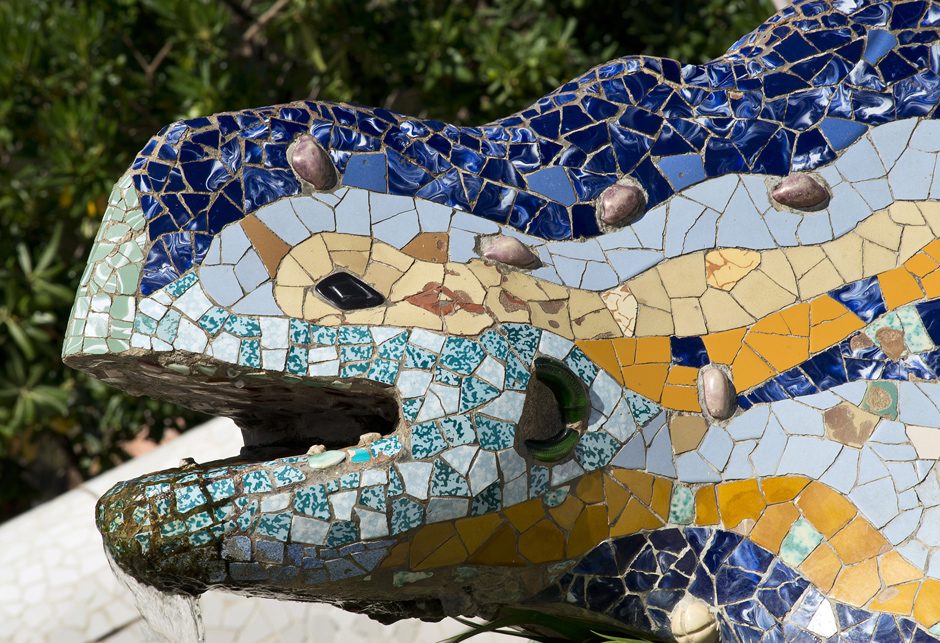
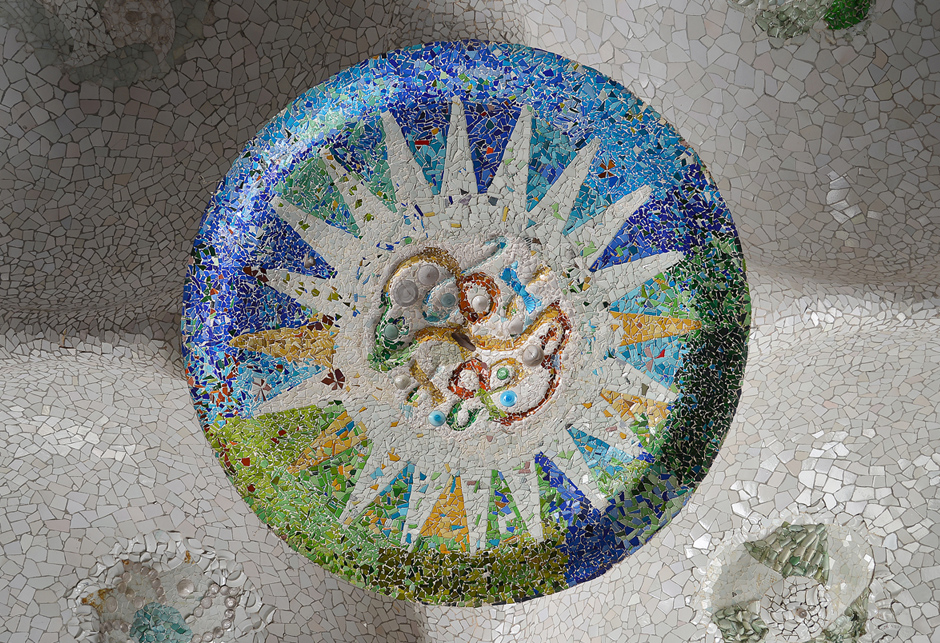
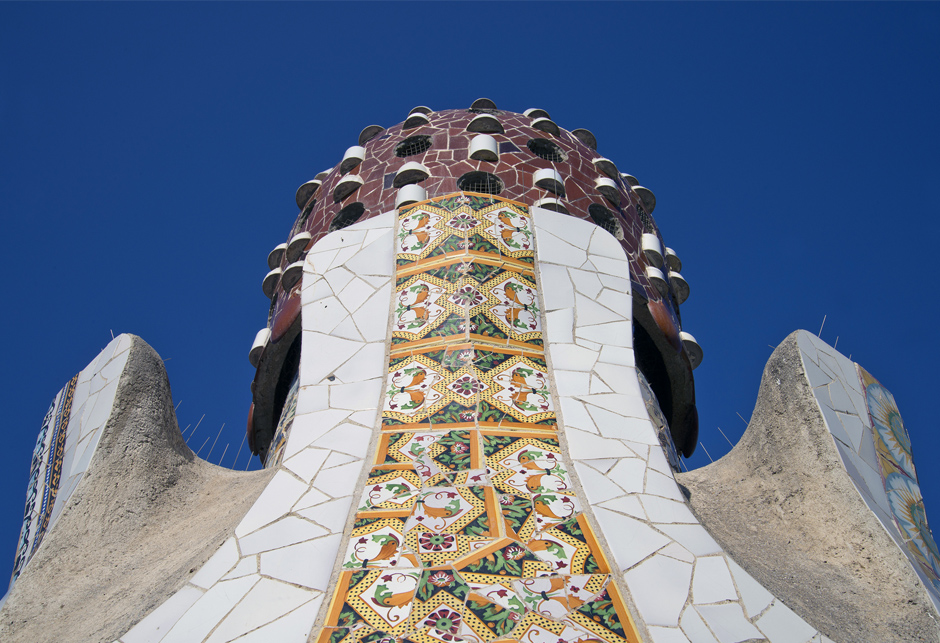
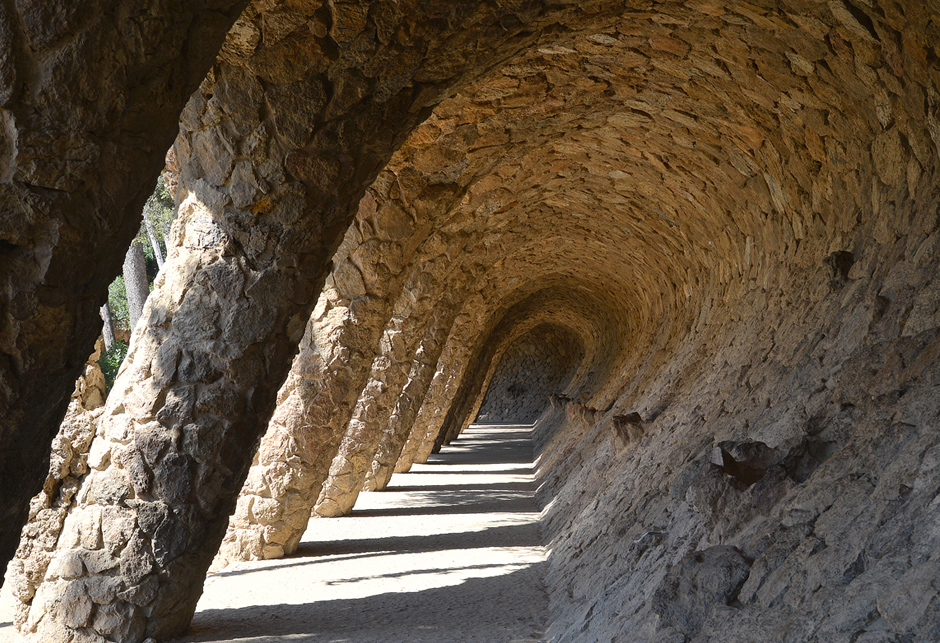
THE MARK OF GAUDÍ
The large dimensions of the site and its steep terrain made it advisable to build various accesses. The main entrance was located in the lower part of the property, with its front on Carrer Larrard, a developed street which traditionally provided access to the marquis’ estate.
For this spot Gaudí, with his very personal style, designed two splendid entrance pavilions serving as gatehouses and a large gardened and highly ornamented stairway that led to the grand porch, called the Hypostyle Hall, conceived as the site for a market. The grand esplanade would be built on top of this covered space, forming a genuine vantage point overlooking the city. The esplanade was completely surrounded by a long serpentine bench made of prefabricated concrete units clad with ceramic trencadís mosaic. The vantage point also featured a little amphitheatre where performances were planned to be held.
SPECIAL ATTENTION TO EVERY DETAIL
Always loyal to his principles, Gaudí made admirable use of the materials which the site had to offer. He made a meticulous study of the irregular terrain of the mountain and built a system of streets and viaducts to reach the homes, making all the necessary excavations to carry out the civil engineering work with a minimum impact and an optimum adaptation to the landscape. Since he knew how to read nature and was a good architect, he foresaw the future needs of the residents. Gaudí built a big water tank underneath the porch to collect rain water and assure the maintenance of an exuberant vegetation in this way.
Water reached the tank by an ingenious drainage system running through the inside of the big Neo-Doric columns. The capitals of the columns held up small spherical prefabricated concrete vaults, which were also clad with trencadís mosaic.
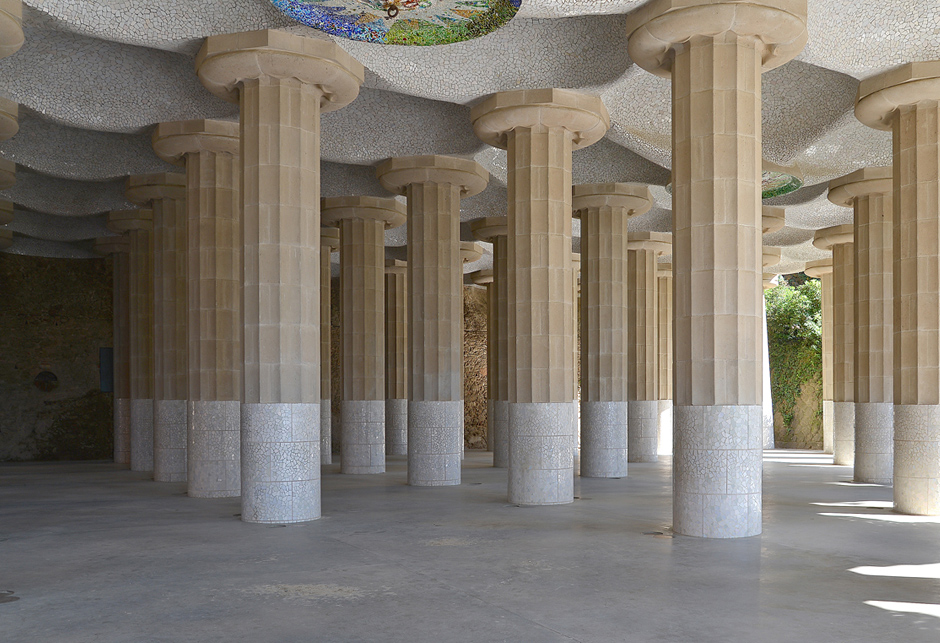
FROM A RESIDENTIAL DEVELOPMENT TO A PUBLIC PARK
Due to the scant success of the real estate venture, the works were halted in 1914. Eusebi Güell died in 1918 and his heirs chose to sell the property. In 1922, Barcelona City Council bought it for the sum of 3,200,000 pesetas in a transaction that was marked by a certain controversy, subsequently making it a public park in this area of the upper part of the city. An exceptionally calm and peaceful place until a few years ago, Park Güell now forms part of the Tres Turons city park and is highly esteemed by the people of Barcelona.
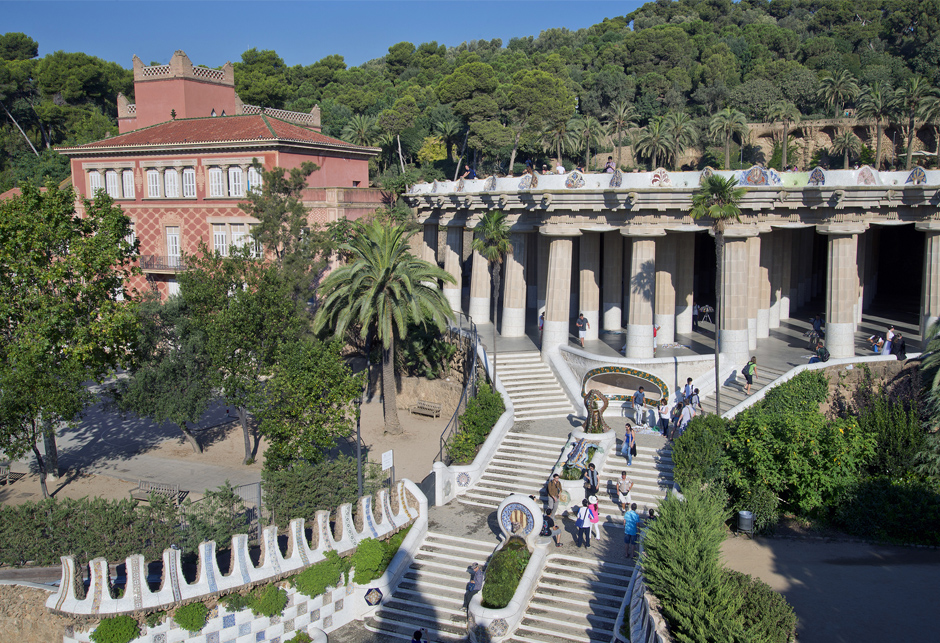
TOURIST ATTRACTION
Park Güell was declared a Cultural Property of National Interest in 1969 and it was listed as a World Heritage Site by UNESCO in 1984.
However, in recent years the increase of tourism in Barcelona and the spread of Gaudí’s fame have led to a massive and somewhat careless use of the park, which has become a major tourist attraction.
For this reason, in order to assure the preservation of this splendid heritage site which is unique in all the world and to deal with the great pressure exerted on its environment, Barcelona City Council has now regulated the visits to the most fragile part of the park, which comprises 7.9% of its overall area.
OPENING HOURS
From 1 January to 28 March: 08:30-18:15
From 29 March to 3 May: 08:00-20:00 h
From 4 May to 6 September: 08:00-21:30 h
From 7 September to 24 October: 08:00-20:00 h
From 25 October to 31 December: 08:30-18:15 h
HOW TO GET THERE
Metro: L3 - Vallcarca / Lesseps stations
Bus: H6, 32, 24, 92
TOURISTIC TRANSPORTS
Bus Turístic: Blue Route. Park Güell
Barcelona City Tour: East Route (green colour). Park Güell